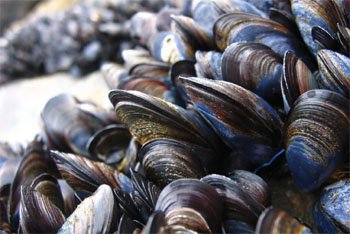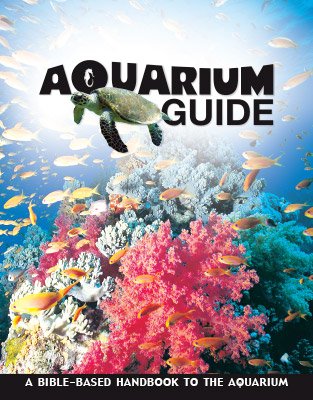Common Mussel
Common mussels live in large colonies.
Design

Common mussels live in large colonies and release their gametes (eggs and sperm) synchronously (at the same time) in the water column for maximum fertilization. The mussel was also created with the ability to make extremely tough fibers, called byssus threads, that it uses to attach itself to other things. These threads resemble soft rubber at one end and rigid nylon at the other and are 5 times tougher than a human tendon.
Features
- The shell of the common mussel has two halves (hence its name “bivalve”), both similar in shape. After the shell has been opened, a large closing muscle and four pairs of gills become visible.
- It is a filter feeder and uses its cilia to funnel sea water into its mouth opening, where it filters minute food particles for digestion.
Fun Facts
- This creature is also called the blue mussel.
- The common mussel can process 10–18 gallons (45–70 l) of water a day; it absorbs oxygen from the water that passes over its gills.
- The common mussel can defend itself from predator snails by tying them down with its byssus threads.
- This species is commonly farmed and harvested for food throughout the world.
CLASS: Bivalvia (bivalves and clams)
ORDER: Mytiloida (mussels)
FAMILY: Mytilidae (mussels)
GENUS/SPECIES: Mytilus edulis
Size: 2–5 in (5–13 cm)
Diet: Organic matter and phytoplankton
Habitat: Coasts and estuaries of north and southeastern Atlantic Ocean, and the northeastern and southwestern Pacific Ocean
Aquarium Guide
With fun facts about more than 100 animals, this long-awaited Aquarium Guide includes beautiful pictures and reveals the incredible facts and design features that point to our amazing Creator. This handy size guide is excellent for school field trips and family trips to your favorite aquarium!
Browse Kids Book- © 2024 Answers in Genesis
- Privacy Policy
- Contact
- About

